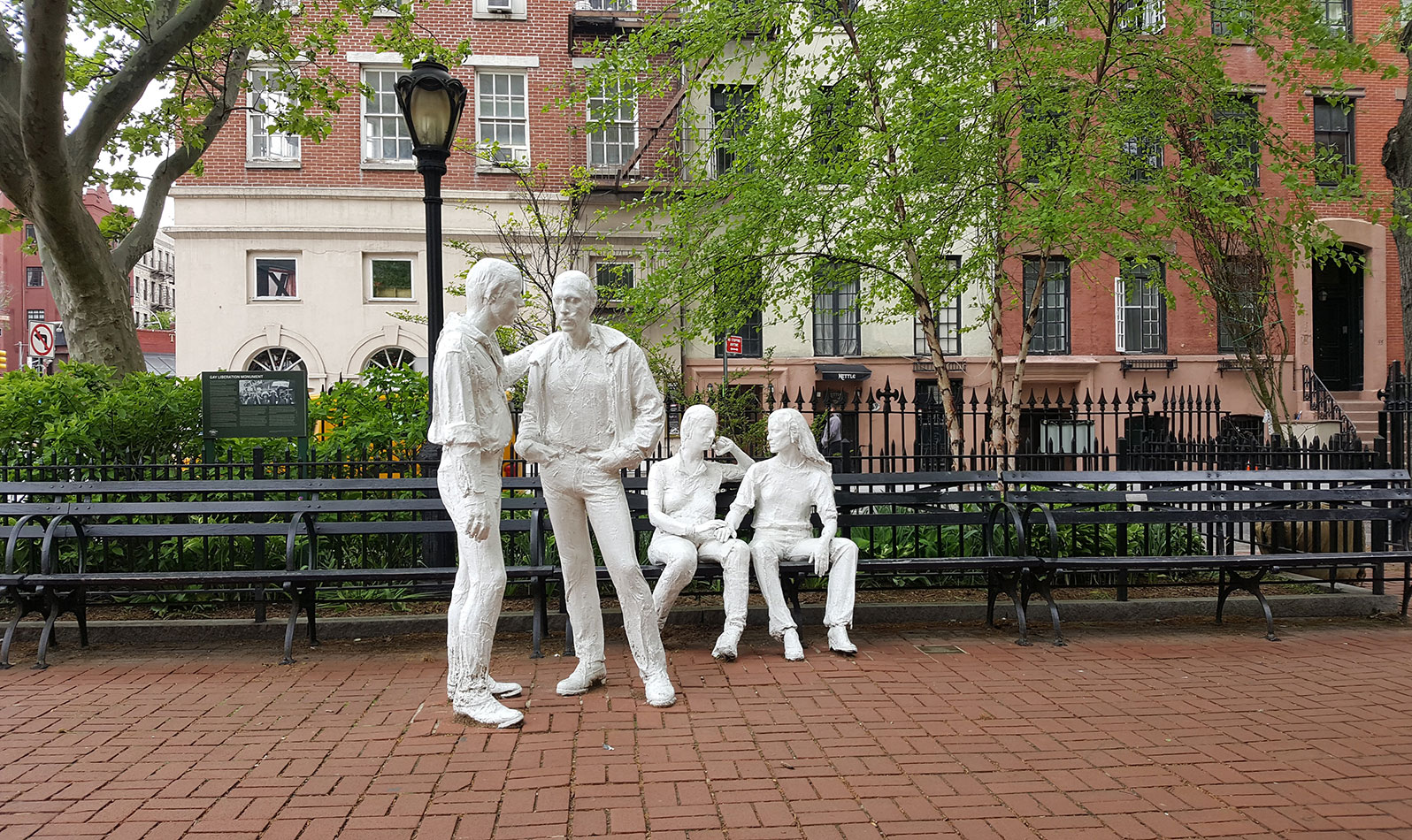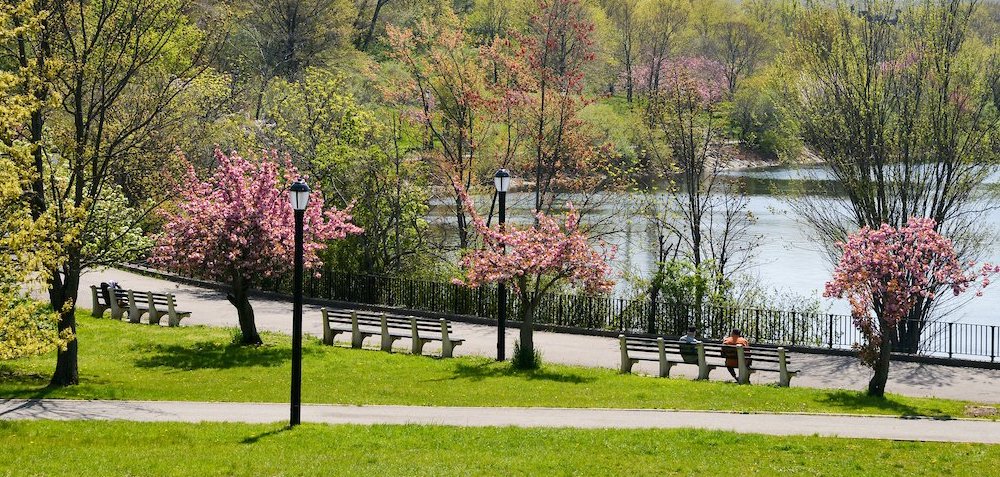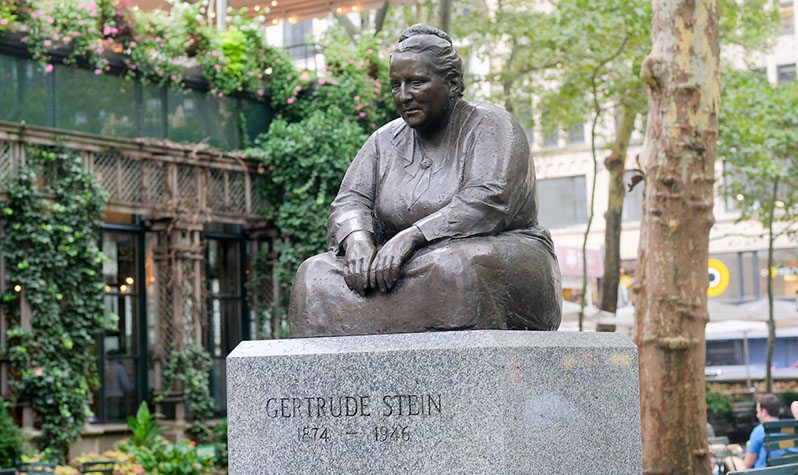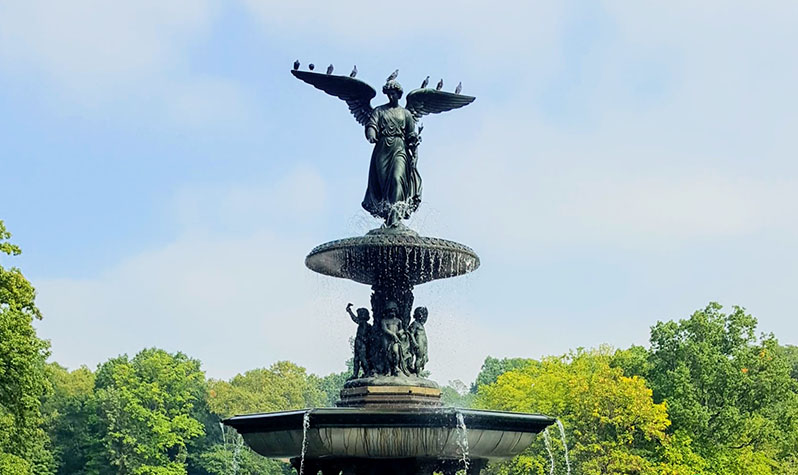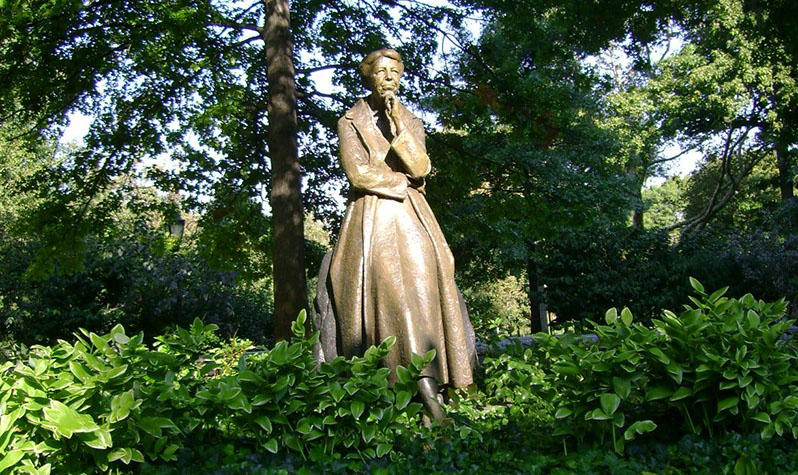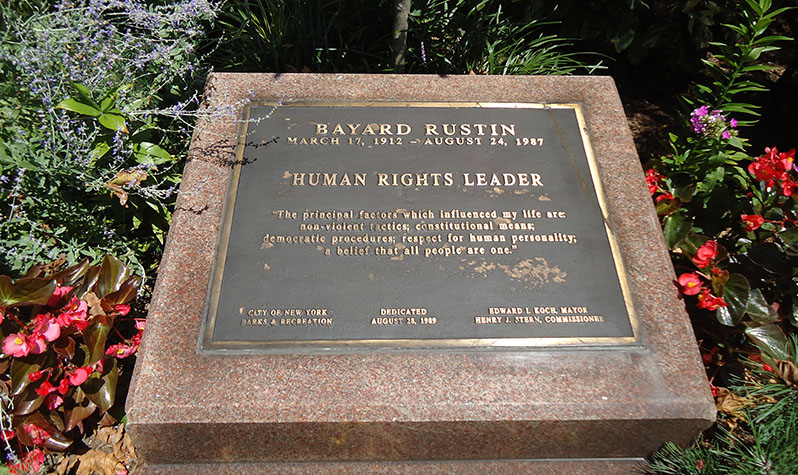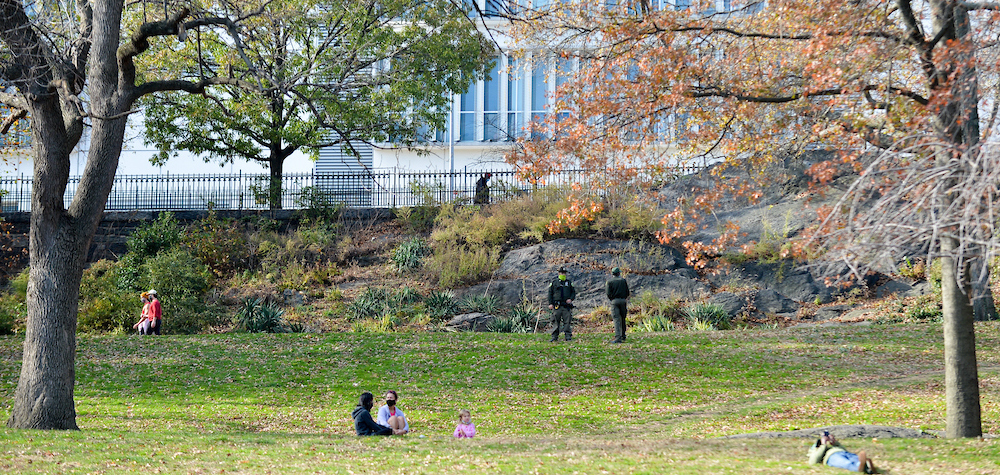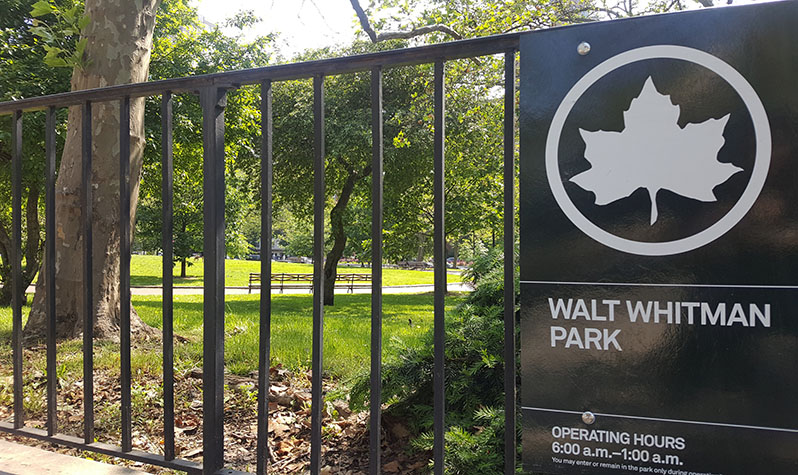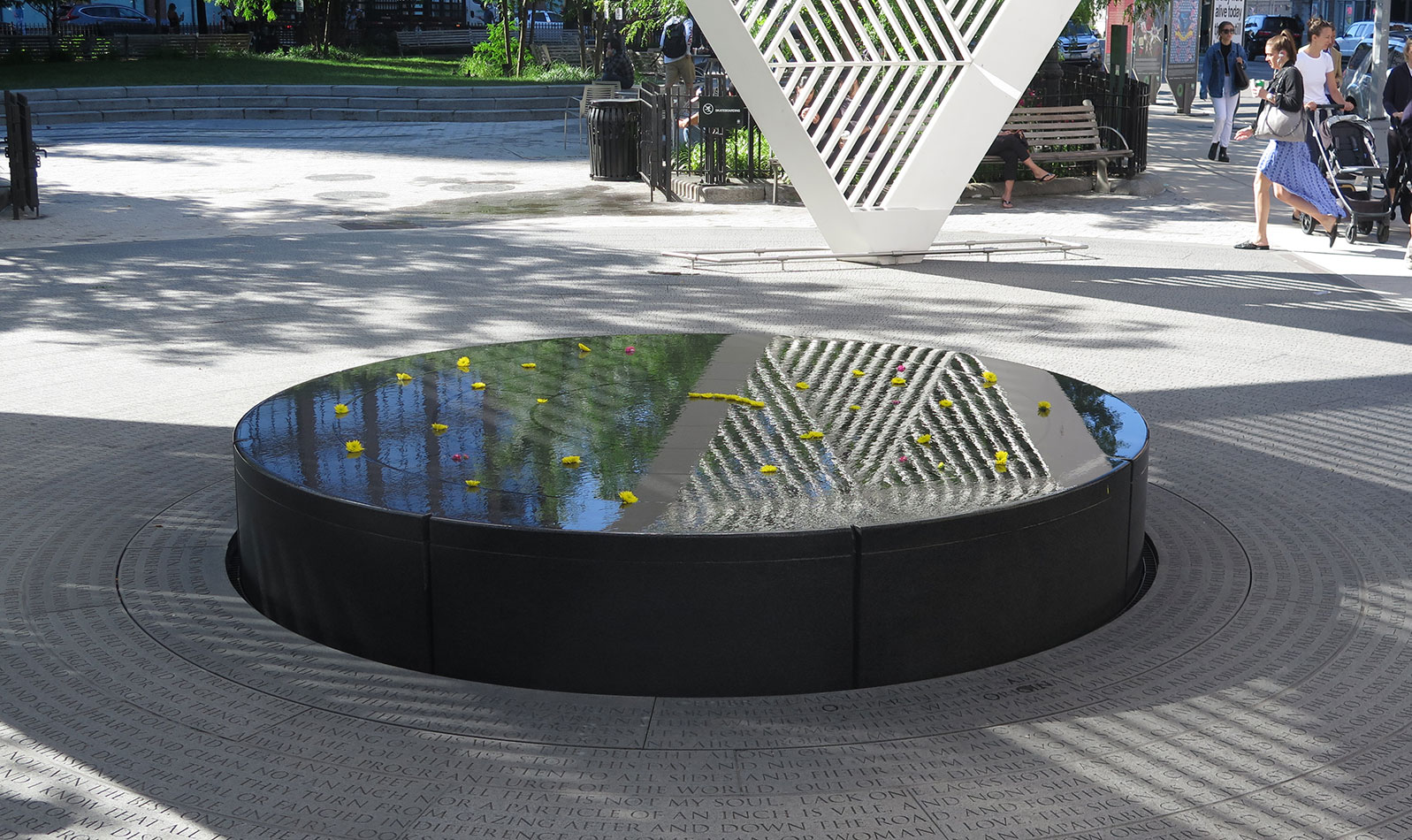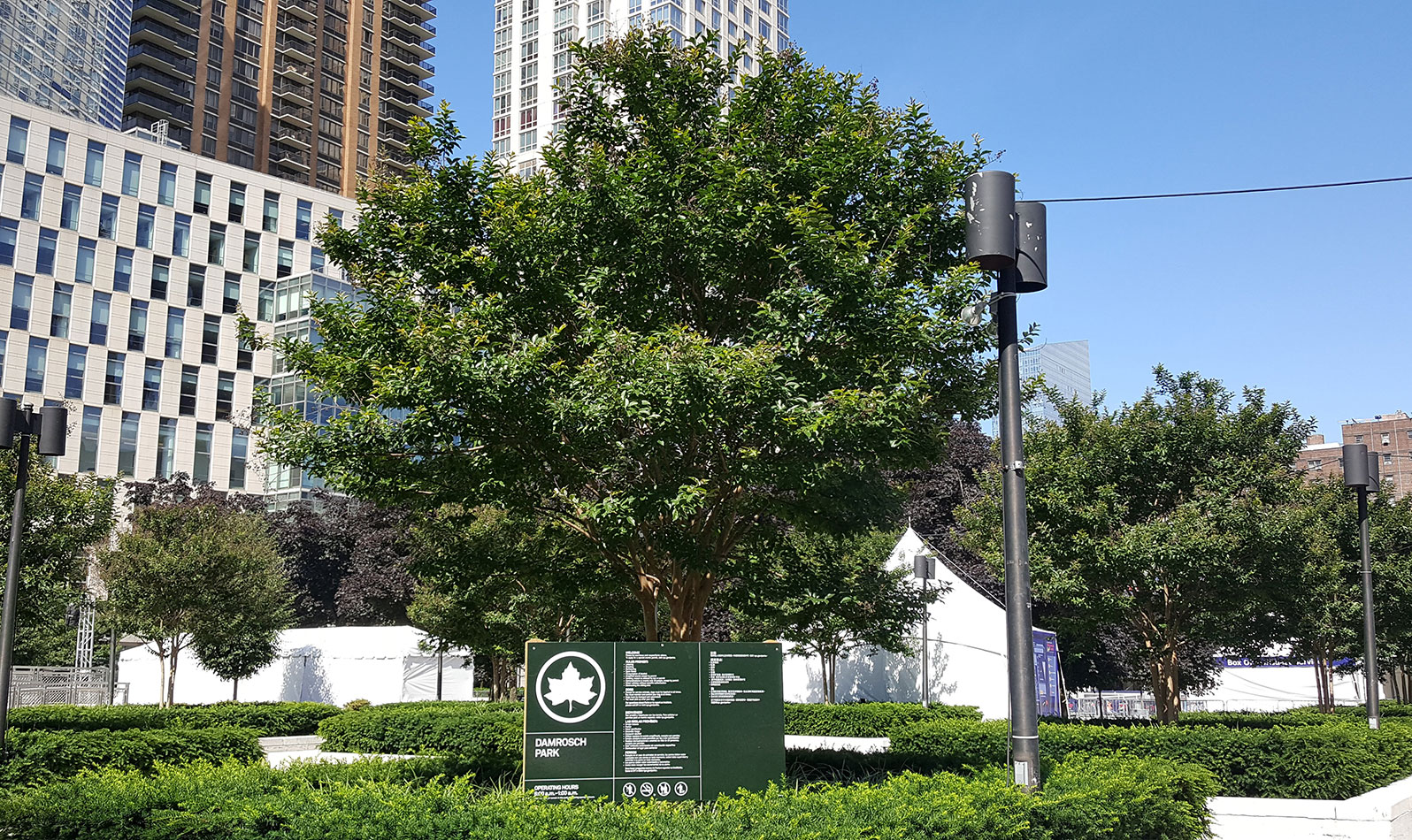Pride at NYC Parks
Explore parks and historic sites in New York City that commemorate the history and legacy of the LGBTQIA+ movement and community.
The Stonewall Riots and NYC's First Pride March
The Stonewall Riots—in protest of a police raid at Stonewall Inn, a gay bar in Greenwich Village, on June 28, 1969—sparked the modern movement for LGBTQ rights, as well as advocacy for the legalization of gay bars and the organization of the first NYC Pride March (then known as the Christopher Street Liberation Day March).
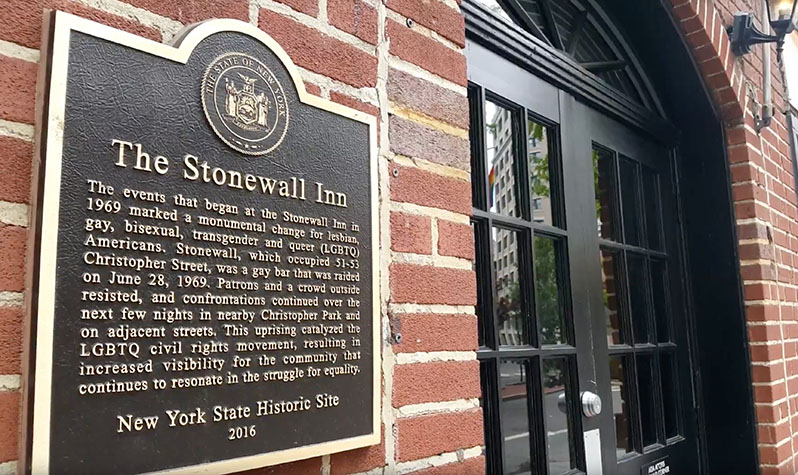
The Christopher Street Liberation Day March took place in 1970, on the one-year anniversary of the Stonewall riots. It started out from Sheridan Square in Greenwich Village and was followed by a "Gay-in" at Sheep Meadow in Central Park. The third Pride March began in Central Park and ended in Washington Square Park, which was the kickoff point of a July 1969 march to Stonewall in protest of the police raids. Learn more about Washington Square Park's Pride history
Gay Liberation Monument, Christopher Park
This sculpture at Christopher Park, opposite the historic Stonewall Inn, honors the gay rights movement and commemorates the events at Stonewall. In 2018, Christopher Park became a national park and the first-ever U.S. national monument to LGBT rights. Learn more about the Gay Liberation Monument and the Stonewall riots
The First NYC Dyke March
Twenty-four years after the first Pride March, the New York Lesbian Avengers organized and held the first NYC Dyke March in June 1993. The march began in Bryant Park and ended in Union Square. Held on the Saturday before the NYC Pride March, this annual event now ends in Washington Square Park.
Many notable New Yorkers, artists, and writers helped shaped the pride of the LGBTQ+ movement and gay rights. Here are highlights of some of those stories told in our parks:
Alice Austen House, Alice Austen Park
Alice Austen (1866-1952) was a prolific photographer, producing thousands of photographs that captured life in NYC. She lived at Clear Comfort (inside what is now Alice Austen Park) with Gertrude Tate at Clear Comfort, now known as the Alice Austen House.

Alice was a trailblazer on many fronts. Some of her early works included images of women embracing and cross-dressing. She was also the first woman on Staten Island to own a car and the founder of the Staten Island Garden Club. In 2017, the historic house was designated as a National LGBT Historic Site. Visit the Alice Austen House
Audre Lorde Walk, Silver Lake Park
Across the way from Alice Austen Park, Silver Lake Park honors Audre Lorde, a self-described "Black, lesbian, mother, warrior, poet."
Lorde was born in New York City in 1934. She published her first volume of poems, The First Cities, in 1968, the same year she was writer-in-residence at Tougaloo College in Mississippi. There she met Frances Clayton, her partner for 21 years. Lorde lived on Staten Island at 207 St. Paul’s Avenue with Clayton and her two children from 1972 to 1987. She continued to publish both poetry and prose volumes that addressed civil rights, lesbianism, intersectionality, and Black female identity, and was a speaker at the 1979 National March on Washington for Lesbian and Gay Rights. At the time of her death, Lorde was the poet laureate of New York State. In 2019, the city named the corner of St. Paul’s Avenue and Victory Boulevard, near her old home, Audre Lorde Way and in 2021, the eastern promenade at Silver Lake Park was named Audre Lorde Walk in her honor. Visit Audre Lorde Walk
Mabel Hampton Garden
Both Audre Lorde and Mabel Hampton attended the 1979 National March on Washington for Lesbian and Gary Rights. Mabel Hampton (1902-1989), was a prominent lesbian activist, performer, and philanthropist. She sang and danced as part of an all-Black female ensemble before performing at the Garden of Eden and the Lafayette Theater during the Harlem Renaissance. She spent much of her time in the company of famous queer Black women, like Ethel Waters and Gladys Bentley, and lived openly as a lesbian. In 1932, Hampton met her lifelong partner Lillian Foster. They lived together at 639 East 169th Street in the Bronx since 1943. Hampton also appeared in the films Silent Pioneers and Before Stonewall, and cataloged the stories of Black lesbians at the Lesbian Herstory Archives. Hampton donated her collection of personal papers, memorabilia, and collection of lesbian pulp fiction novels to the Archives. In 1985, she was named the Grand Marshall of the New York City Pride Parade. In 2021, a garden space in Mabel Hampton Playground in the Bronx was named in her honor. Visit Mabel Hampton Garden
Gertrude Stein Monument, Bryant Park
This statue in Bryant Park honors American author and arts patron Gertrude Stein (1874-1946). The monument's proximity to the New York Public Library reflects Stein's significant literary contributions—from plays, librettos, and film scripts to biographies, autobiographies, lectures, essays, poems, and novels. In 1903, Gertrude moved to Paris where she met her lifelong partner Alice B. Toklas in 1907. They remained a couple until Gertrude passed away in 1946. Learn more about the Gertrude Stein Monument
Angel of the Waters at Bethesda Fountain, Central Park
This famous Angel of the Waters sculpture in Central Park is the masterpiece of sculptor Emma Stebbins (1815-1882), the first woman to receive a commission for a major public work in New York City. The statue is part of the beloved Bethesda Fountain which celebrates the 1842 opening of the Croton Aqueduct, which brought fresh water from Westchester County into New York City. Some believe the statue was modeled after her lover, Charlotte Cushman, who was an American actress. In fiction, the Angel of the Waters also watches over the characters at the conclusion of Angels in America, Tony Kushner's landmark play examining identity and American values during the AIDS era. Learn more about the Bethesda Fountain
Keith Haring
Keith Haring (1958-1990) was an openly gay NYC artist made famous for his signature drawings of chalk-like outlines. By the late 1980s, his public art pieces became a monumental voice in tackling social issues revolving around the '80s crack epidemic, sexuality, love, and diversity.

Keith Haring poses near the Crack is Wack Mural in 1986. (Photo courtesy of The Keith Haring Foundation)
Keith Haring's sculptures have been displayed in Riverside Park and Central Park, and his famous Crack is Wack Mural sits in the Crack is Wack Playground in Harlem.
Carmine Street Mural by Keith Haring, James J Walker Park
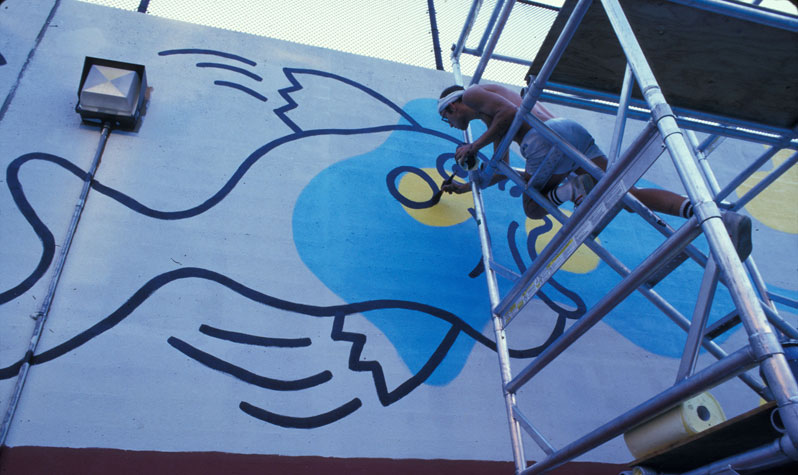
(Photo courtesy of The Keith Haring Foundation)
In 1987, Keith Haring painted the Carmine Street Pool Mural at what is now the Tony Dapolito Pool (currently temporarily closed) in James J Walker Park. Learn more about Keith Haring's life and legacy
Eleanor Roosevelt Monument, Riverside Park
This monument in Riverside Park depicts and honors New Yorker, humanitarian, and former U.S. First Lady Eleanor Roosevelt (1884-1962). In 1946, one year after serving as First Lady for 12 years, Eleanor became the Chairperson of the Commission on Human Rights and also chaired the drafting committee for the Universal Declaration of Human Rights. Learn more about the Eleanor Roosevelt Monument
Arthur W. Strickler Triangle
This triangle at Hudson Street and Bethune Street in the West Village honors community activist Arthur Strickler who organized religious support for NYC's gay rights bill (passed in 1986), which banned discrimination on the basis of sexual orientation in housing, employment, and public accommodations.
Bayard Rustin Plaque, Ralph Bunche Park
At the southern end of Ralph Bunche Park is a commemorative plaque to Bayard Rustin (1912-1987). Rustin, an African-American civil rights leader who organized the March on Washington Movement, was an openly gay man who in the 1980s became an activist for gay rights. In 2013, President Barack Obama posthumously awarded Rustin the Presidential Medal of Freedom. Visit Ralph Bunche Park
James Baldwin Lawn, St Nicholas Park
Much like his friend Bayard Rustin, the groundbreaking author James Baldwin was a monumental figure in both the Black civil rights and gay liberation movements. As a writer, he brought up themes of gay and bisexual desire in landmark works such as Giovanni’s Room. He was named one of the inaugural members of the National LGBTQ Wall of Honor at the Stonewall National Monument. In 2020, the grassy hill in St. Nicholas Park in Harlem was renamed the James Baldwin Lawn. Visit James Baldwin Lawn
Langston Hughes, St. Nicholas Park South Playground
In 2021, the former St. Nicholas Park South Playground was renamed to honor Langston Hughes (1901?-1967), the acclaimed poet, novelist, and social activist. Born in Joplin, Missouri, Hughes moved to New York City and became influential as a leader of the Harlem Renaissance movement. Much of his work included themes of uplift, racial pride, and a battle against oppression in all its forms. Although Hughes deliberately obscured his sexuality during his lifetime, many scholars note pro-gay themes in his work, such as the searing short story "Blessed Assurance." Visit St. Nicholas Park South Playground
Walt Whitman Park, Brooklyn
In Brooklyn, poet, journalist, and humanist Walt Whitman (1819-1892) is honored with a park in his name. His work Leaves of Grass, first published in 1855, boldly expressed themes of freedom of self as well as sexuality and love. While a New York City resident, Whitman's opinion columns that he wrote while the editor of the Brooklyn Daily Eagle were instrumental in the establishment of Fort Greene Park. Visit Walt Whitman Park
AIDS Memorial, Manhattan
Portions of the words of Walt Whitman's "Song of Myself" from Leaves of Grass were selected by conceptual artist Jenny Holzer and engraved in the pavement of the AIDS Memorial in the West Village. The memorial commemorates those we've lost to the fight against HIV/AIDS.
The AIDS Memorial sits at the crossroads of NYC's early AIDS history and the LGBTQ community's mobilization against the AIDS epidemic. The memorial was the site of a former campus for St. Vincent's Hospital (which established the first AIDS ward in the city). Less than a block away is the LGBT Community Center where ACT-UP (the AIDS Coalition to Unleash Power) and other AIDS advocacy and support groups first organized. The memorial is also within blocks of the first headquarters of Gay Men’s Health Crisis (GHMC), and the former office of Dr. Joseph Sonnabend who pioneered community-based research trials for AIDS drugs. His co-op board’s attempt to evict him led to the nation’s first AIDS anti-discrimination case in 1983. Learn more about the AIDS Memorial
Damrosch Park, Manhattan
Each year, the Gay Men's Health Crisis (GHMC) hosts the AIDS Walk in Central Park. Founded in 1986, the AIDS Walk is the largest single-day AIDS fundraising event in the world. The first AIDS Walk took place in Damrosch Park. Visit Damrosch Park

